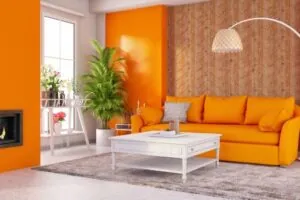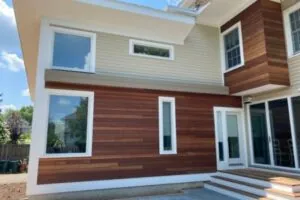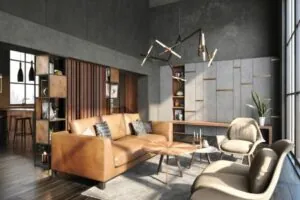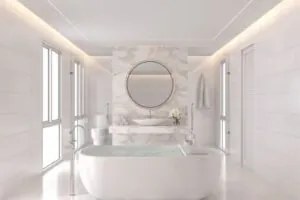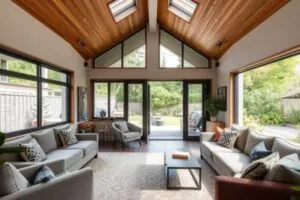Housing needs are evolving, and homeowners are looking for creative ways to maximize their property’s potential. Whether you need extra space for family, a rental income opportunity, or a private retreat, adding an ADU (Accessory Dwelling Unit) is a smart investment. These secondary units—whether a backyard cottage, a garage conversion, or an in-law suite—offer flexibility, value, and long-term benefits. More and more homeowners are considering adding an ADU to their homes rather than relocating and buying something new.
It is a logical choice that makes sense for many families in and around the local area. With housing costs rising and multi-generational living becoming more common, an ADU provides the perfect solution. It allows homeowners to generate passive income, create independent living spaces, or even boost their property value. Plus, cities are easing restrictions to encourage ADU construction, making adding one to your home easier than ever. The red tape is still there, but it is less than it has been in years prior, which is why many homeowners are considering an Accessory Dwelling Unit addition.
But is adding an ADU the right move for you? This article will explore the top benefits of building an Accessory Dwelling Unit and why more homeowners choose this option. Whether you are considering rental income, a guest house, or a future-proof home, this guide will help you understand how an ADU can transform your property and lifestyle. Here is a quick overview of what you need to know:
Benefit #1: Generate Additional Income
Adding an ADU to your property is a strategic financial move that can generate steady passive income. With the rising demand for rental housing, homeowners can capitalize on their space by turning it into a rental unit. ADUs provide a flexible, long-term revenue stream, helping homeowners offset mortgage payments, cover property expenses, or boost overall financial stability. Accessory Dwelling Units present a profitable opportunity for homeowners whether for short-term or long-term rentals.

How ADUs Serve as Rental Units for Extra Revenue
ADUs are an ideal rental option due to their independent structure and privacy, making them attractive to tenants. They cater to long-term renters, traveling professionals, and even short-term guests in high-demand areas. Homeowners can legally rent ADUs in many cities, often benefiting from favorable zoning laws and tax incentives. Market rates for ADUs vary by location, but they typically generate significant rental income while maintaining property privacy and flexibility.
Tips for Designing an Attractive and Marketable ADU
A well-designed Accessory Dwelling Unit attracts quality tenants and maximizes rental income. Prioritize functionality, natural light, and modern finishes to enhance appeal. Ensure separate entrances and efficient layouts to maintain privacy. Smart home features, energy-efficient appliances, and stylish interiors boost marketability. Outdoor spaces, like patios or gardens, add value. Research local rental trends to ensure your ADU aligns with tenant preferences and remains competitive in the market.
Benefit #2: Accommodate Multi-Generational Living

Multi-generational living is becoming common as families seek affordable and convenient housing solutions. Adding an ADU provides a private yet connected space for elderly parents, adult children, or extended family members. It allows families to stay close while maintaining independence, reducing housing costs, and ensuring better care and support for aging relatives. ADUs offer a practical, long-term solution for evolving family needs.
Creating Private Spaces for Elderly Parents or Adult Children
Accessory Dwelling Units provide comfortable, accessible housing for aging parents who need proximity to family without losing independence. With single-level designs, wide doorways, and safety features, these units enhance senior living. For adult children, ADUs serve as affordable transitional housing, offering independence without the financial burden of renting elsewhere. This setup allows families to support one another while ensuring privacy, making them versatile housing solutions for different life stages.
Why ADUs Are Ideal for Family Flexibility and Comfort
ADUs offer separation while keeping loved ones nearby, creating a balanced living arrangement. They eliminate the need for costly assisted living or external rentals, making them a cost-effective alternative. Families can adjust Accessory Dwelling Unit usage over time—housing relatives now and repurposing the space later. Whether for childcare support, senior care, or guest accommodations, ADUs provide long-term flexibility and security for growing families.
Benefit #3: Enhance Property Value
Adding an ADU is a proven way to increase property value. These units boost a home’s overall marketability, attracting buyers who seek rental income potential or multi-functional living spaces. Homes with ADUs often sell faster and at higher prices, offering additional utility and investment benefits. Whether for personal use or future resale, ADUs provide long-term financial gains and strengthen a property’s overall worth.
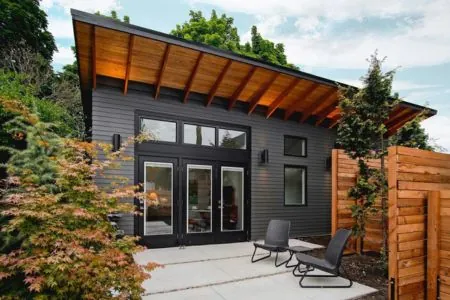
How ADUs Increase Resale Appeal and Marketability
Homes with ADUs appeal to buyers, including investors, multi-generational families, and those seeking rental income. The added living space makes properties more functional and versatile, increasing demand in competitive markets. Many buyers see Accessory Dwelling Units as an innovative financial advantage, making properties with them more desirable. Homes featuring ADUs often command higher listing prices and attract serious buyers in areas with housing shortages.
The Long-Term Financial Advantages of Investing in an ADU
An ADU provides consistent financial benefits beyond resale value. Homeowners can generate rental income for years, helping offset mortgage costs. Additionally, ADUs often appreciate alongside the main home, making them a secure, high-return investment. With increasing demand for alternative housing, ADUs will continue to be a valuable asset. Over time, the unit pays for itself, proving to be one of the most innovative property upgrades homeowners can make.
Benefit #4: Adapt to Flexible Uses
One of the biggest advantages of adding an ADU is its ability to adapt to different needs over time. These units serve multiple purposes, from rental spaces to home offices, studios, or guest accommodations. An Accessory Dwelling Unit can easily be repurposed as life circumstances change, offering homeowners a versatile and long-term solution. This flexibility makes ADUs a practical investment, ensuring they remain functional for years to come.
Designing ADUs for Evolving Needs: Offices, Studios, or Guest Houses
ADUs can be designed to serve various functions beyond traditional housing. A well-planned ADU can function as a home office, art studio, gym, or guest suite. Features like large windows for natural light, soundproofing for workspaces, and open layouts for creativity enhance usability. For families, ADUs make excellent guest houses, providing privacy and comfort for visitors. A multi-purpose approach ensures the space remains valuable for changing needs.
Incorporating Features That Allow Easy Transitions Between Uses
Thoughtful design elements make an Accessory Dwelling Unit easy to repurpose. Open floor plans, modular furniture, and convertible spaces allow seamless transitions between uses. Installing separate entrances, kitchenette hookups, and accessible bathrooms ensures adaptability. Neutral interior designs cater to various functions, while energy-efficient and smart-home features enhance long-term value. By planning for future flexibility, homeowners can maximize their ADU’s functionality and ensure it remains valid over time.
Conclusion
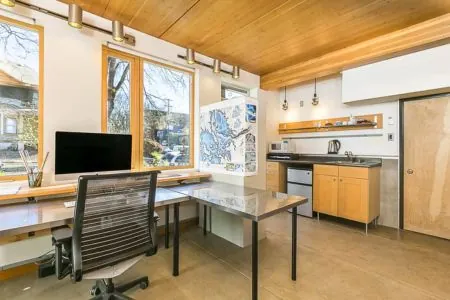
Adding an Accessory Dwelling Unit is a strategic investment that enhances property value, financial stability, and lifestyle flexibility. Whether used for rental income, multi-generational housing, or personal workspace, ADUs provide long-term benefits that adapt to changing needs. As cities continue to support ADU development, now is the perfect time to explore this versatile housing solution.
If you are considering adding an ADU in Treasure Valley, assess your space, budget, and goals. A well-designed unit can serve multiple purposes while increasing your home’s value and livability. With thoughtful planning, an ADU can become one of your most innovative property upgrades, ensuring financial and functional rewards for years. See for yourself why a new Accessory Dwelling Unit might be just the solution you have been searching for!
Benefits of Adding an ADU to Your Property FAQ
1. What is an Accessory Dwelling Unit (ADU)?
An ADU is a self-contained living space on the same property as a primary home. It can be a detached unit, a garage conversion, or an in-law suite, offering flexibility for rental income, multi-generational living, or personal use.
2. How much does it cost to build an ADU?
The cost of an ADU varies based on size, location, and features. On average, prices range from $50,000 to $300,000, depending on whether it’s a conversion, attached, or detached unit.
3. Can I rent out my ADU for additional income?
Yes! Many homeowners use ADUs as rental properties to generate passive income. Check local zoning laws and rental regulations to ensure compliance before leasing the unit.
4. How does an ADU increase property value?
An ADU boosts home value by adding functional living space, attracting buyers looking for rental income potential or multi-generational housing solutions. Properties with ADUs often sell faster and at higher prices.
5. What are the zoning and permit requirements for building an ADU?
Zoning and permit regulations vary by location. Many cities have relaxed restrictions to encourage ADU development, but it’s essential to check with your local planning department for specific guidelines.
6. Can an ADU be used for something other than housing?
Absolutely! ADUs can serve multiple purposes, including home offices, guest suites, art studios, gyms, or short-term rentals. Their flexibility makes them a valuable long-term investment.
7. How long does it take to build an ADU?
The timeline depends on the complexity of the project. Converting an existing structure may take 3-6 months, while building a detached ADU from scratch can take 6-12 months, including permits and construction.


